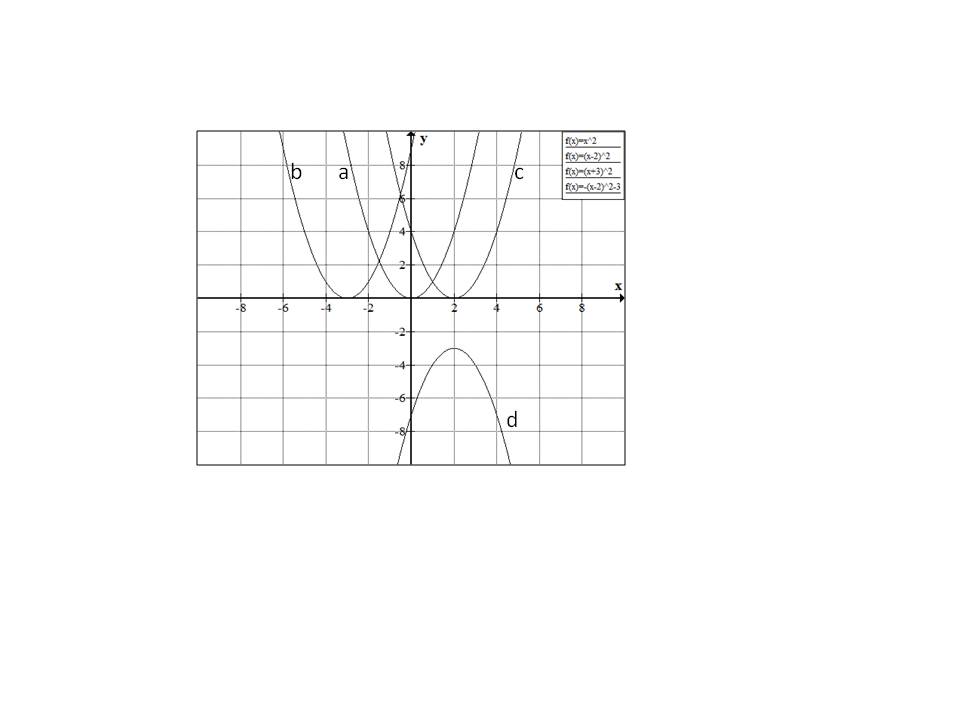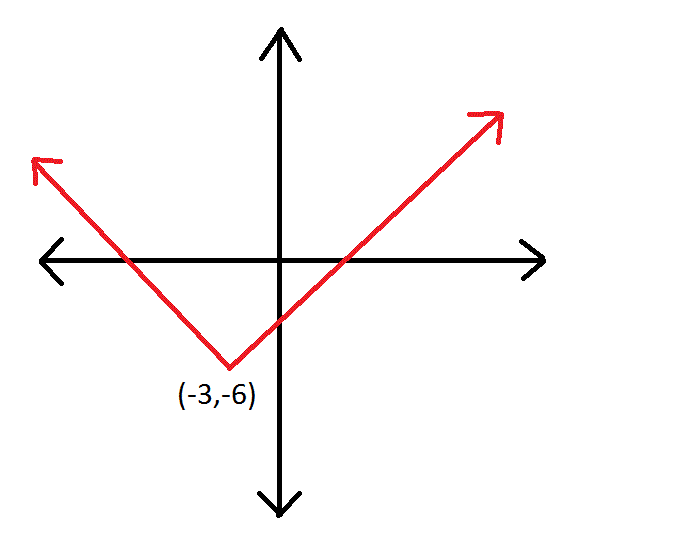All Algebra 1 Resources
Example Questions
Example Question #32 : Functions
What is the equation of a parabola with vertex 


From the vertex, we know that the equation of the parabola will take the form 

To calculate that 


Now the equation is 
Expand the squared term:
Distribute the fraction through the parentheses:
Combine like terms:
Example Question #33 : Functions











None of the above



Starting with



Similarly 

Hence the correct answer is option 
Example Question #1 : Graphing Parabolas
Which of the following graphs matches the function 






Start by visualizing the graph associated with the function :

Terms within the parentheses associated with the squared x-variable will shift the parabola horizontally, while terms outside of the parentheses will shift the parabola vertically. In the provided equation, 2 is located outside of the parentheses and is subtracted from the terms located within the parentheses; therefore, the parabola in the graph will shift down by 2 units. A simplified graph of looks like this:

Remember that there is also a term within the parentheses. Within the parentheses, 1 is subtracted from the x-variable; thus, the parabola in the graph will shift to the right by 1 unit. As a result, the following graph matches the given function :

Example Question #1 : How To Graph An Absolute Value Function

Which of these would most likely be the equation corresponding to the above graph?
This is an absolute value graph. Its equation takes the form 


Since the graph of 


or
Example Question #1 : How To Graph An Absolute Value Function
Give the 
The graph has no 
To find the 


Rewrite this as the compound equation:

Solve each separately:
There are two 
Example Question #1 : How To Graph An Absolute Value Function

Which of these would most likely be the equation corresponding to the above graph?
This is an absolute value graph. Its equation takes the form 


Since the graph of 


Plug these values into the general form of the equation:
Simplify:
Example Question #2 : How To Graph An Absolute Value Function
Example Question #2 : How To Graph An Absolute Value Function
Example Question #3 : How To Graph An Absolute Value Function
Example Question #1 : How To Find F(X)
A function is given by 

Plugging in 2 wherever 
Certified Tutor
Certified Tutor
All Algebra 1 Resources




















































































